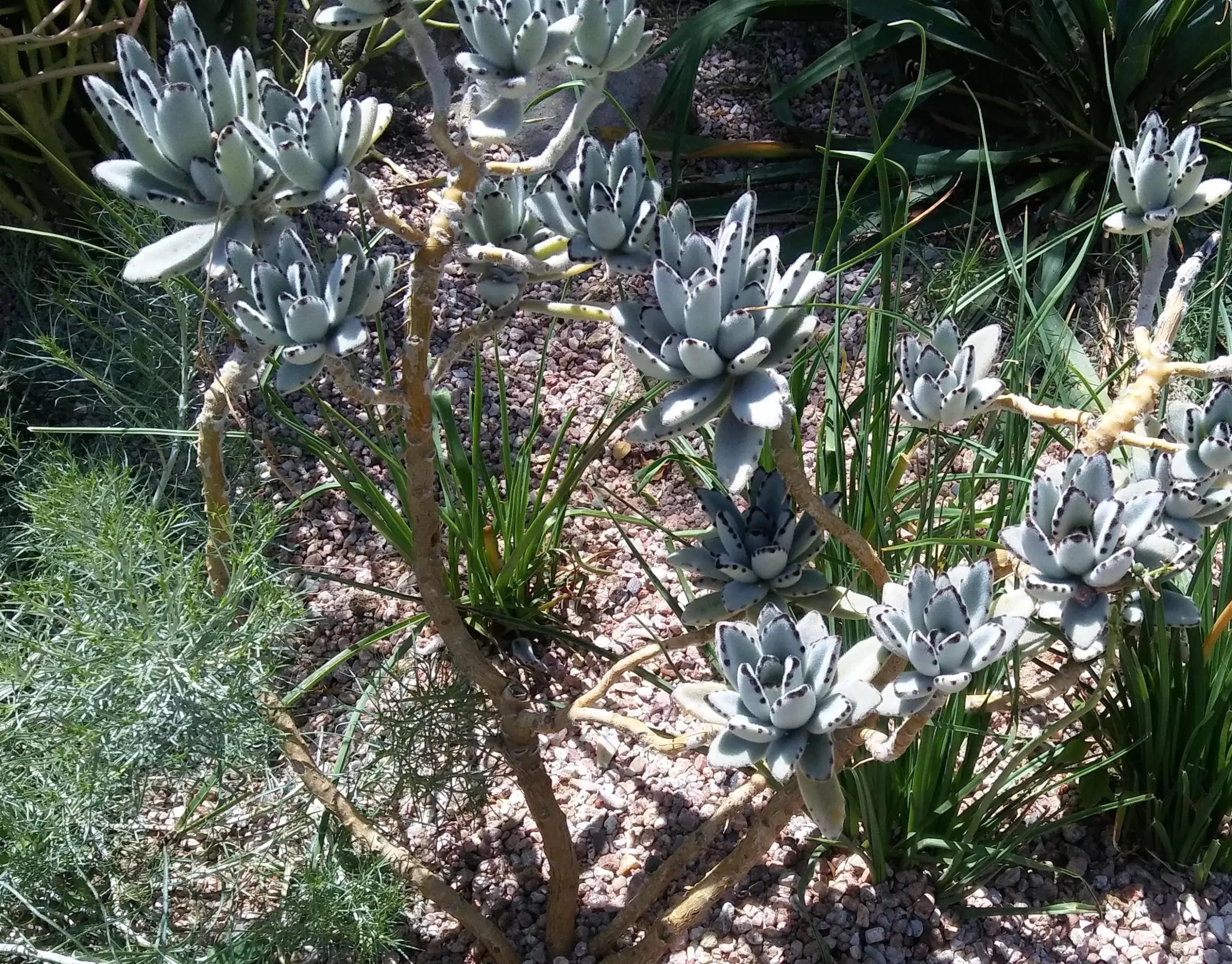The panda plant, also known as Kalanchoe tomentosa, is a succulent that has become increasingly popular in recent years due to its striking appearance and ease of care. With its soft, fuzzy leaves and distinctive markings, the panda plant is a unique addition to any collection of houseplants.
Native to Madagascar, the panda plant thrives in warm, arid conditions and is well-suited to indoor environments. Its leaves are covered in fine, silvery hairs that give the plant a velvety texture and protect it from the intense sun. The leaves are also adorned with small, chocolate-brown spots along the edges, which resemble the markings of a panda, hence its name.
One of the most appealing aspects of the panda plant is its low maintenance requirements. It can tolerate periods of neglect and is highly adaptable to a variety of lighting conditions. However, it is important to note that the panda flower prefers bright, indirect light and should be kept away from direct sunlight, which can cause the leaves to scorch.

The panda plant is also drought-tolerant and can survive extended periods without water. This makes it an ideal choice for busy plant owners or those who may forget to water their plants regularly. However, it is important not to overwater the plant, as this can cause root rot and other issues. It is best to allow the soil to dry out completely between watering’s and to use a well-draining potting mix.
When it comes to propagation, the panda plant is relatively easy to propagate through stem cuttings. Simply take a cutting from the stem of the plant, remove the bottom leaves, and allow it to dry out for a few days before planting it in well-draining soil. With proper care, the cutting should take root within a few weeks.
In terms of pests and diseases, the panda plant is relatively resistant to most common plant ailments. However, it is still important to keep an eye out for signs of mealybugs, spider mites, and other pests that can infest succulents. If you notice any signs of infestation, treat the plant with an appropriate insecticide and take steps to prevent the pests from spreading to other plants.
While the panda plant is relatively low maintenance, there are a few key factors to keep in mind when caring for this unique succulent. One important consideration is the potting soil. It is essential to use a well-draining soil that will not retain moisture and cause root rot. A mix of succulent soil and perlite or sand is ideal for this purpose.

Another important aspect of panda plant care is proper watering. As mentioned earlier, the panda plant can survive periods of drought, but it is crucial not to overwater the plant. Overwatering can cause the roots to become waterlogged and lead to rot. A good rule of thumb is to wait until the soil is completely dry before watering, and then give the plant a deep, thorough watering rather than frequent, shallow watering.
The panda plant is also prone to leaf drop, which can be alarming for new plant owners. However, this is a normal process for the plant and does not necessarily indicate a problem. As the plant ages, its lower leaves may naturally wilt and drop off, allowing the plant to focus its energy on new growth.
One unique feature of the panda plant is its ability to produce tiny plantlets on the edges of its leaves. These plantlets, known as “pups,” can be gently removed and planted to propagate new panda plants. This is a fun and easy way to expand your collection of these adorable succulents.
In terms of size, the panda plant typically reaches a height of around 12 inches (30 cm) and a width of 6 inches (15 cm) when fully mature. However, it is important to note that the plant’s growth rate may vary depending on its environment and care.
In addition to its ornamental value, the panda plant has also been used for medicinal purposes in some cultures. The plant has been traditionally used to treat ailments such as skin irritations, coughs, and headaches. However, it is important to consult with a healthcare professional before using the plant for medicinal purposes.
Overall, the panda plant is a beautiful and easy-to-care-for succulent that is well-suited to a variety of indoor environments. Whether you are a seasoned plant enthusiast or just starting out with houseplants, the panda flower is sure to make a great addition to your collection. With its striking appearance, low maintenance requirements, and air-purifying abilities, it is easy to see why this plant has become such a popular choice in recent years. So why not add a panda plant to your home today and enjoy all the benefits it has to offer?
If you enjoyed this read, check out our other posts.














What do you think?
Show comments / Leave a comment